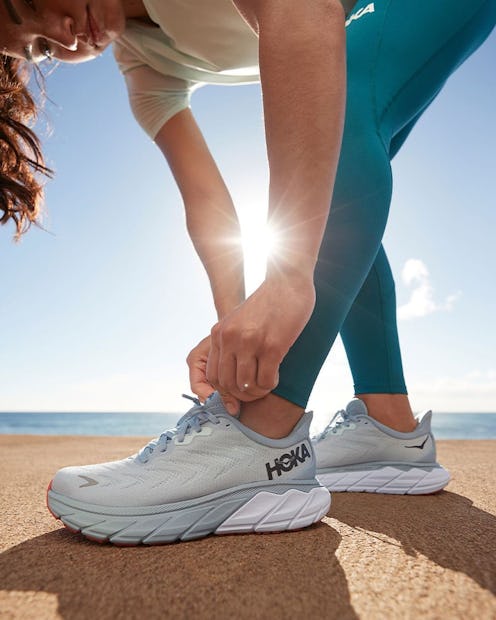The past two years turned many people into runners. Perhaps it was due to the fact that it was one of few exercises one could do safely outdoors with little to no equipment. In fact, about 15% of the US population currently engages in some form of running or jogging, according to the Sports & Fitness Industry Association. Furthermore, some 55% of runners hit a new personal record in distance running in 2020 according to a report by fitness app Strava. And with this uptick has also come a fresh crop of footwear meant to promote speed, agility, and comfort. But, with so many options on the market, which are the best running sneakers for you? And how does one know what to look for?
Indeed not all running shoes are created equal because not all feet are created equal, and not just any old pair in the category will do. There are several things to take into consideration. First and foremost, take note of how your feet move when you run. “Some people have active feet that try to grip the ground when they run, meaning they need a more minimalist platform,” says Matthew Scarfo, certified personal trainer and running coach to TZR. “Maximalist running shoes, or those that are heavily cushioned, can cause vagueness during a run that makes them feel unstable, and can cause the foot to tense, resulting in foot cramps and fatigue.”
Sid Baptista, founder of PYNRS and running coach seconds this notion, explaining that every person’s gait is unique and your foot's initial contact with the ground could be a heel strike, mid-foot strike, or forefoot strike. “I would recommend starting with a gait analysis at a local running store to determine what kind of support you might need and how supportive of a shoe you might need,” he says. “If you are unable to get a gait analysis, a neutral shoe might be a good starting point.”
Speaking of starting points, Baptista adds that all beginners to running should avoid spending more than $120 to $130 on their first pair of sneakers. “Because you are new to this, your wants and needs will evolve the more you run and so you don't want to break the bank,” he says. More experienced runners, he adds, could benefit from switching up their running shoes and brands, as well as the levels of cushioning, etc. And for the experts who are into long-distance sessions, it’s likely you know what works for your body and limbs at this point. “Try running with a different shoe at different distances,” says Baptista. “For shorter runs, use a faster, lighter shoe, and for longer distances, use a more cushioned shoe to support your joints as you tack on the miles.”
While this may seem like a lot of work and time put into selecting a simple sneaker, Baptista explains that selecting the wrong style for your foot could have painful and long-term consequences. “You can develop blisters, corns and calluses on your feet, your feet might hurt during or after each run or, worse, you could end up with plantar fasciitis or tendonitis,” he says. “It can also create a domino effect — if you do not address any foot injuries, it can travel up the leg, affecting your IT band, knees, hips, and back.”
Another crucial piece of advice that is often muddled in the running conversation is how often one should replace their shoes. Yes, just like your favorite pair of flats that get tattered and worn down, sneakers do the same, especially when running outdoors on dirt trails or pavement. “On average, you will want to replace your running shoe every 300 to 500 miles,” recommends Baptista. “As you get closer to the 300 mile mark, keep an eye on the sole of the shoe to look for visible wear and tear. Oftentimes one shoe will have more wear than the other. If you don't replace a worn out shoe, it could lead to many running injuries including, but not limited to, shin splints, plantar fasciitis, and runner's knee.”
Feeling the urge to invest in a new pair of running sneakers? The picks below are some of the highest reviewed and favorited among runners, coaches, and trainers. Peruse the picks ahead and get ready for takeoff.
We at TZR only include products that have been independently selected by our editors. We may receive a portion of sales if you purchase a product through a link in this article
